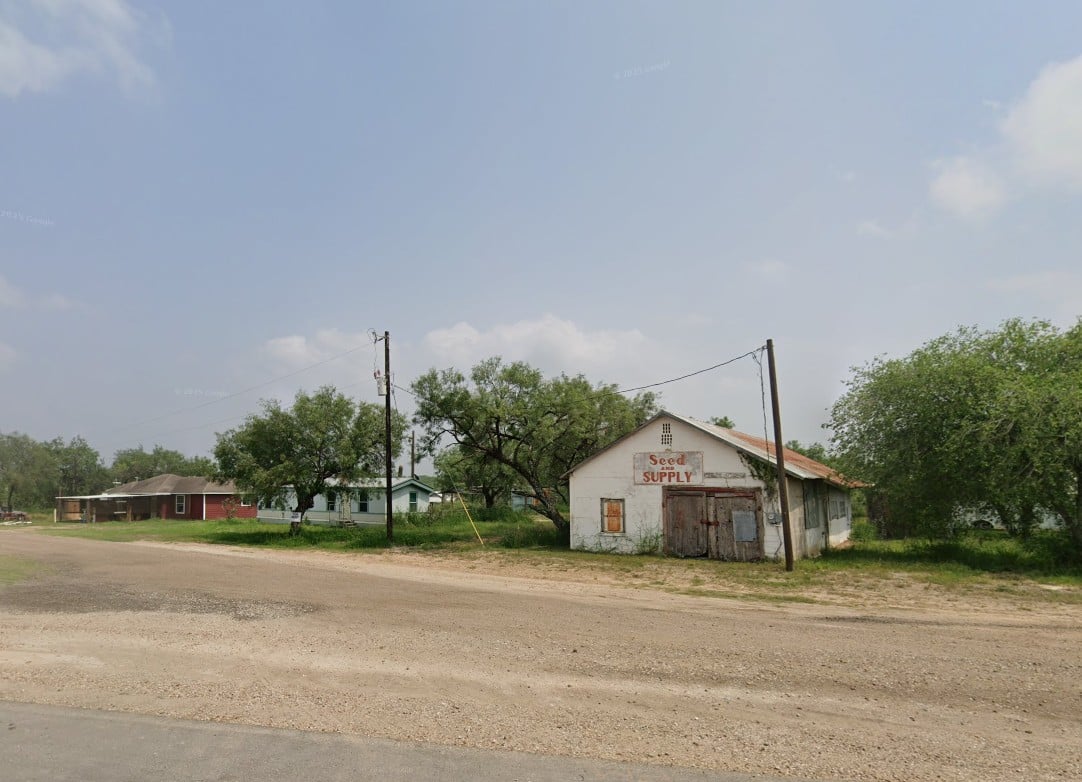
Southwest Texas is defined by distances. Towns appear on the horizon as small clusters of buildings, separated by hours of desert road and the slow rise of mountain ridges. The light here changes everything—turning limestone to silver at dawn and pulling long shadows across the mesquite flats by evening.
This is a region where history still marks the map. Old railroad stops remain on their original sites, adobe storefronts hold their place against the wind, and the Rio Grande continues its looping course through canyons and floodplains. The pace is deliberate, shaped more by land and weather than by any schedule.
Each community in this part of Texas has its own balance between isolation and connection. Some anchor themselves to agriculture or ranching, others to tourism, and a few have been almost entirely reclaimed by the desert. They share the same backdrop of open country, but the details—architecture, industry, population—differ sharply from place to place.
Exploring these towns means moving through a landscape that leaves room for pauses. The scale of the terrain makes every arrival distinct, whether it’s a courthouse square in the mountains or a main street running parallel to the river. In Southwest Texas, separation isn’t absence—it’s the defining element of place.
25. Marathon – Desert Crossroads with Mountain Views
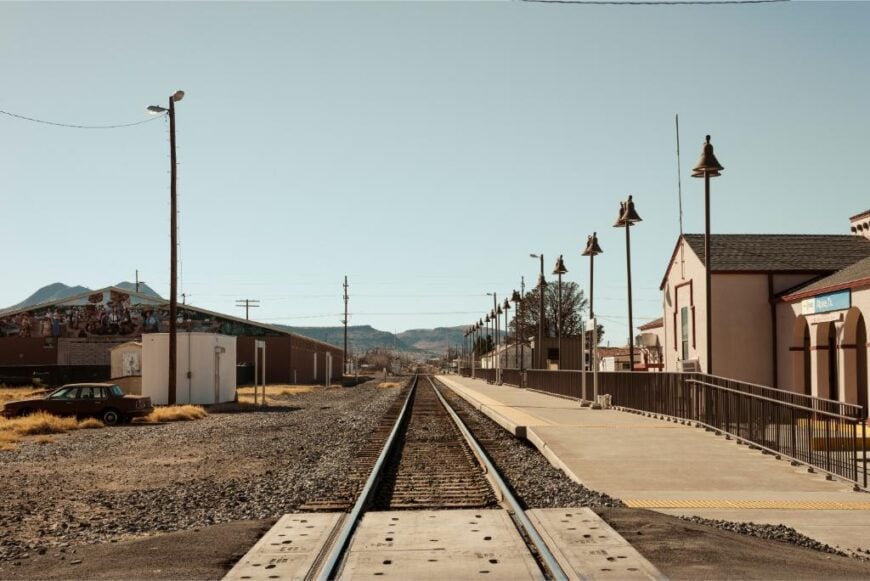
Marathon feels like a wide spot in the road that somehow holds the whole desert in its embrace. Its seclusion comes from being miles from any major city, with the Glass Mountains on one side and Big Bend’s Chisos peaks on the other.
The vibe is a blend of cowboy grit and quiet artistry—historic hotels, small galleries, and a café where everyone knows your name. Wander the adobe-lined streets, browse the local art scene, or stargaze under some of the clearest skies in Texas.
Ranching and tourism keep the small economy ticking, but the land still sets the rhythm. It’s the kind of place where a sunrise over the desert feels like your own private show. Marathon invites you to slow down and stay awhile.
Where is Marathon?
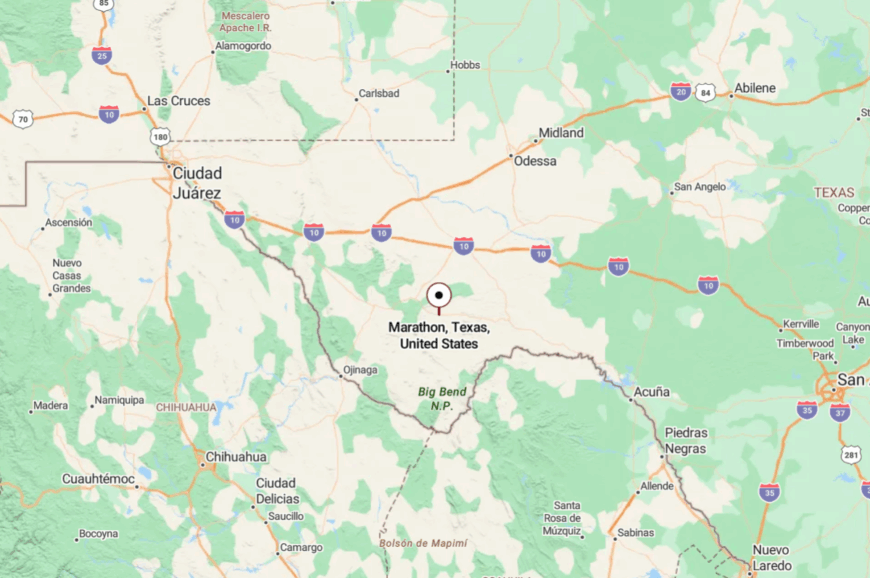
Marathon lies in Brewster County, about 55 miles east of Alpine along US-90. It’s a key eastern gateway to Big Bend National Park, but remains far enough from the park crowds to feel removed.
You reach it by long, straight stretches of highway framed by open desert. The wide horizon greets you like an old friend who’s been waiting.
24. Sanderson – The Cactus Capital of Texas
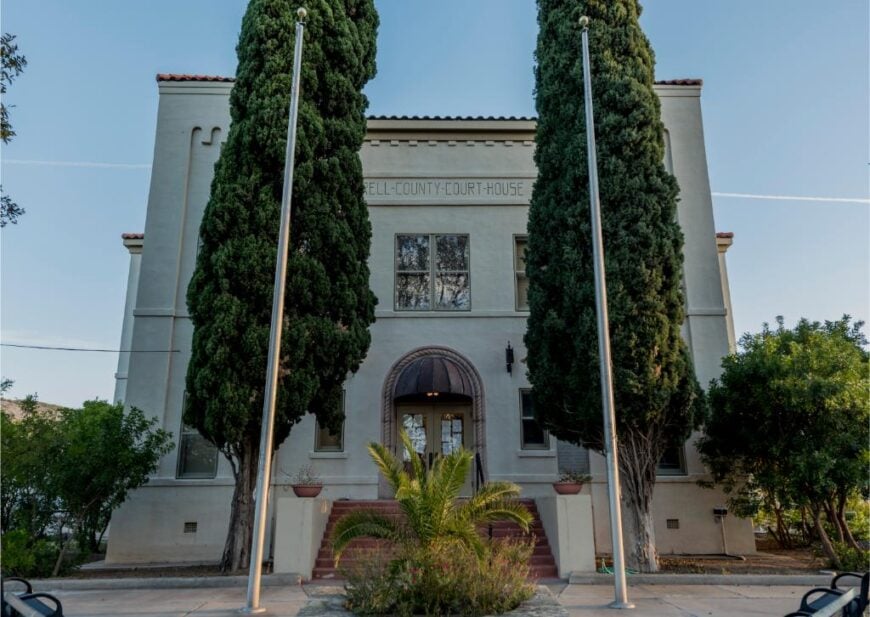
Sanderson sits quietly along US-90, a desert town known for its abundance of cactus and its unhurried pace. Its apartness is due to the vast Terrell County landscape that surrounds it—miles of brush country and rocky ridges.
The vibe is warm and unpretentious: a main street with modest storefronts, friendly diners, and the occasional freight train rumble. Visit the local museum, explore nearby hiking trails, or take a scenic drive toward the Pecos River overlook. Ranching and small-town commerce keep life steady here.
As the sun sets, the desert glows gold, and the air cools just enough to make you linger outdoors. Sanderson is the kind of place where time and distance melt together.
Where is Sanderson?

Located in Terrell County, Sanderson is about halfway between Del Rio and Alpine on US-90. The drive in is a ribbon of road with little to distract from the desert views.
Approaching from any direction, the town rises slowly out of the wide plains. It’s a welcome stop in a land that stretches forever.
23. Presidio – Border Town with a Quiet Beat
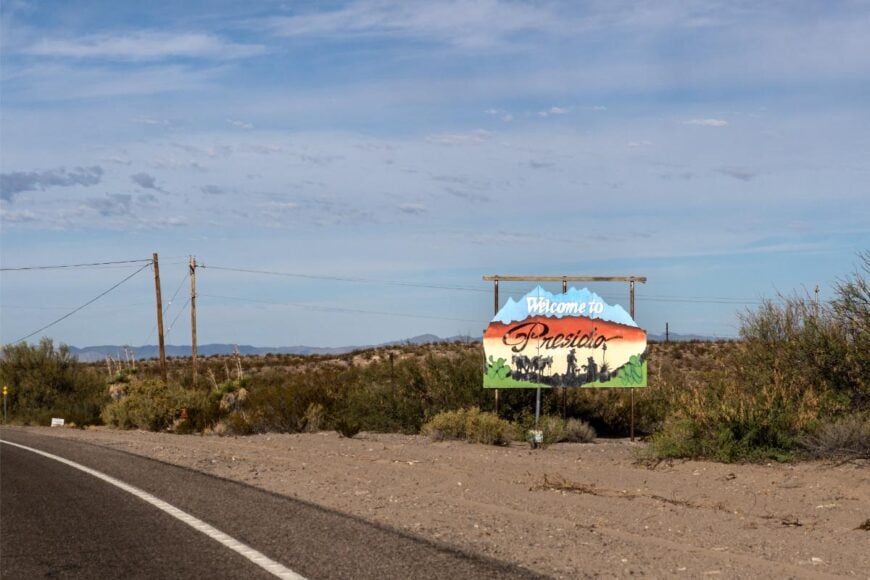
Presidio rests along the Rio Grande, sharing a border with Mexico yet feeling worlds away from the rush. Its seclusion comes from its far-west location, deep in the desert and flanked by rugged mountains.
The mood is laid-back and sunbaked—colorful murals, small tiendas, and friendly hellos on every block. Visit the Fort Leaton State Historic Site, cross the border for authentic cuisine, or drive the scenic River Road toward Lajitas.
Trade and border life shape the local economy, but the surrounding land still calls the shots. The light here has a way of turning ordinary moments into something cinematic.
Where is Presidio?
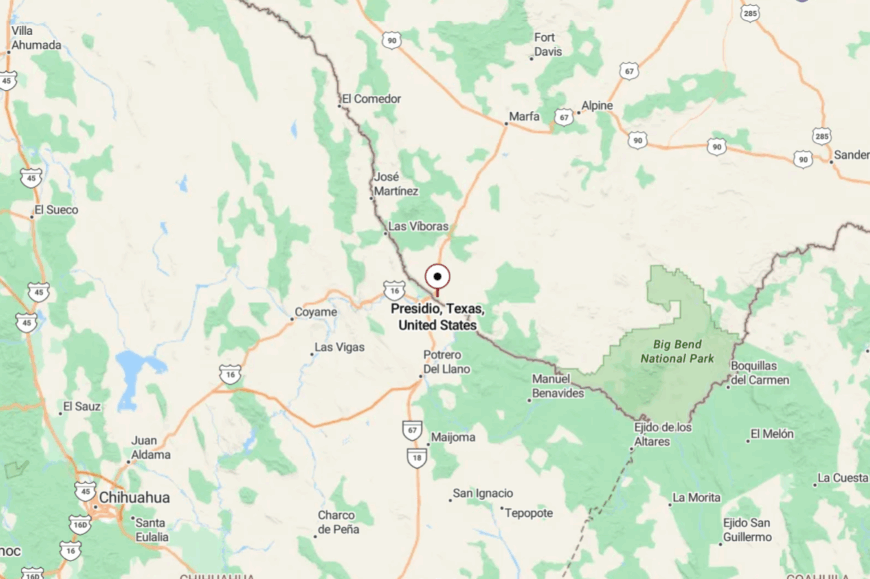
Presidio is in Presidio County, about 88 miles southwest of Marfa via US-67. It sits at the southern end of the famed River Road (FM 170), which winds along the Rio Grande.
The approach is a mix of desert flats and mountain passes. By the time you arrive, the pace has already slowed to match the river’s flow.
22. Balmorhea – Springs in the Desert
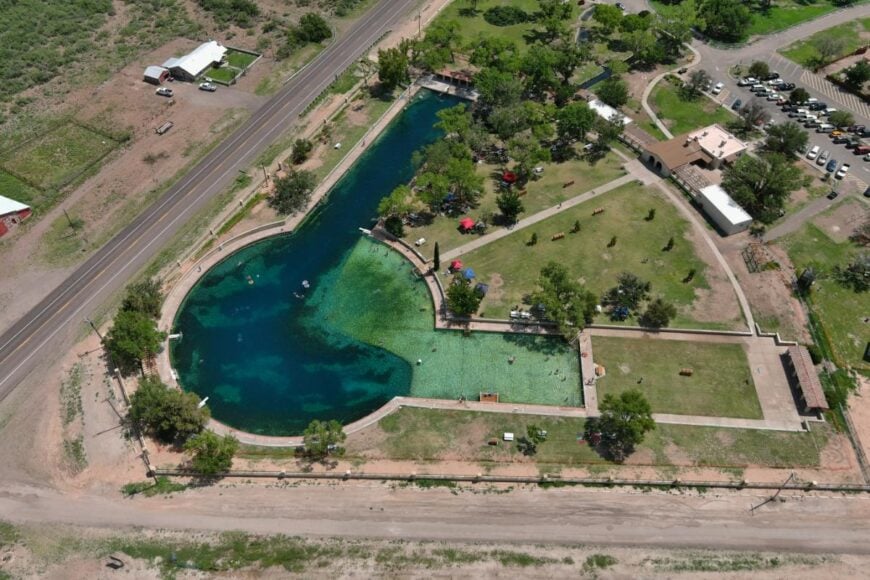
Balmorhea is a small town with a big secret: the largest spring-fed swimming pool in the world. Surrounded by the Chihuahuan Desert, its apartness is softened by the oasis of Balmorhea State Park.
The vibe is refreshing and unhurried—shaded picnic tables, clear turquoise water, and the sight of fish drifting beneath swimmers. Swim in the spring, explore nearby desert trails, or photograph the Davis Mountains on the horizon. Agriculture and tourism blend quietly here, without overwhelming the calm.
On warm evenings, the desert air smells faintly of mesquite and water. Balmorhea feels like stumbling upon a hidden well in the wilderness.
Where is Balmorhea?
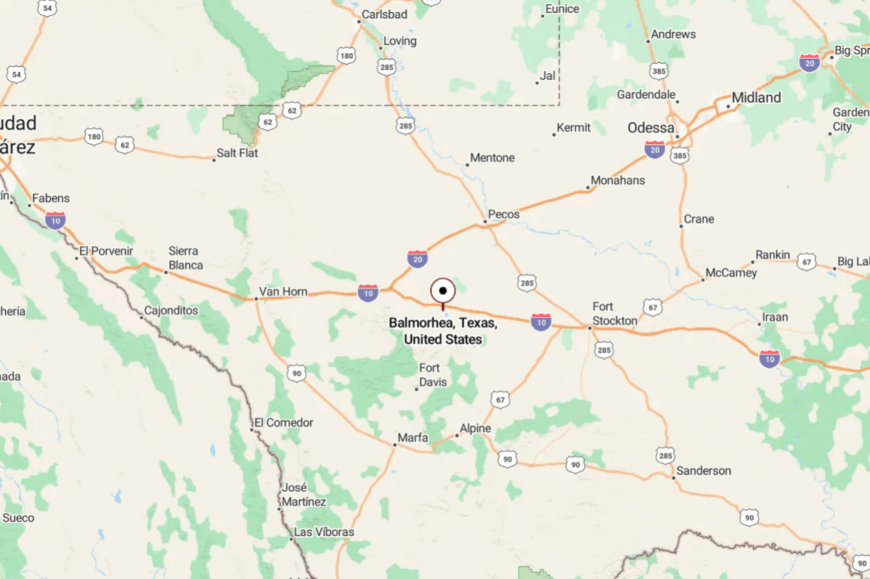
Balmorhea sits in Reeves County, just off I-10, about 58 miles west of Fort Stockton. Despite the highway access, it feels like a secret oasis tucked between dry hills.
A short drive down TX-17 leads you to the park gates. It’s a place that proves the desert can hold surprises.
21. Sierra Blanca – Gateway in the Mountains

Sierra Blanca, named for the white limestone peak nearby, feels like a mountain town paused in time. Its seclusion is rooted in its position at the crossroads of I-10 and US-90, far from major metro areas.
The vibe is old-west rustic—weathered buildings, a quiet courthouse square, and mountains rising beyond the edges of town. Visit the historic Hudspeth County Courthouse, explore ghost-town ruins nearby, or hike the low desert hills.
Rail and highway history run deep here, though the pace is slow now. The surrounding landscape turns sunset into a daily event worth stopping for.
Where is Sierra Blanca?
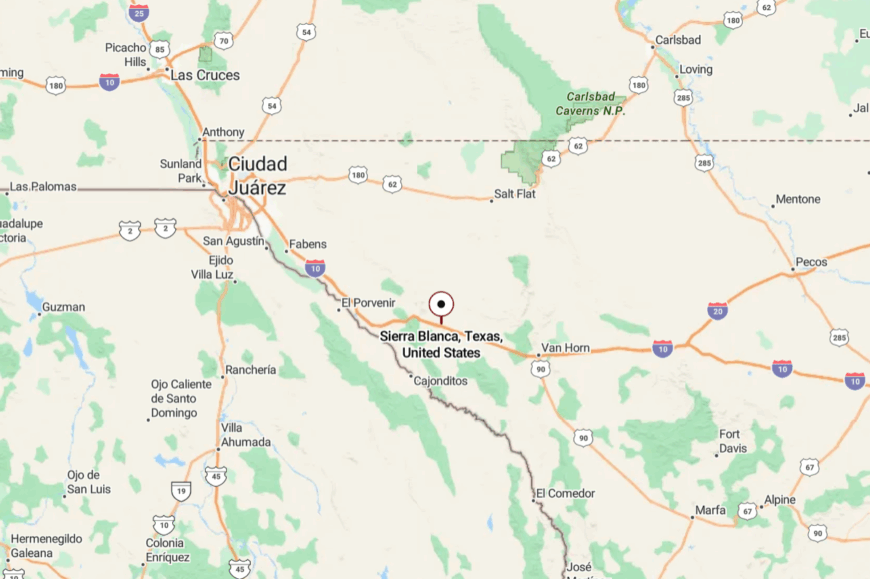
This small town is in Hudspeth County, about 85 miles southeast of El Paso. It’s reached via I-10, but the moment you exit, the world feels quieter.
The road passes wide-open country with the peak as a steady guide. It’s close to the interstate but far from the interstate mindset.
20. Valentine – The Town of Love and Long Roads
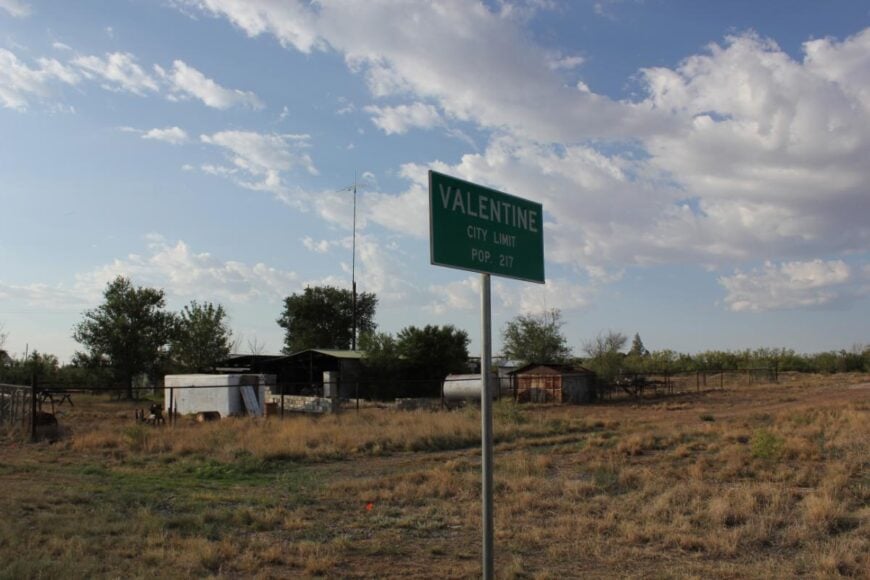
Valentine is tiny—home to fewer than 150 people—but its name draws curious visitors. Its apartness comes from being along US-90 with nothing but desert on either side for miles.
The mood is quirky and spare: a post office that gets Valentine’s Day traffic, an art installation or two, and lots of sky. Stop for a photo at the Prada Marfa installation just down the road, explore old buildings, or simply listen to the wind.
Ranching is the quiet backbone here. Valentine is the kind of place where even the horizon feels like it’s keeping a secret.
Where is Valentine?
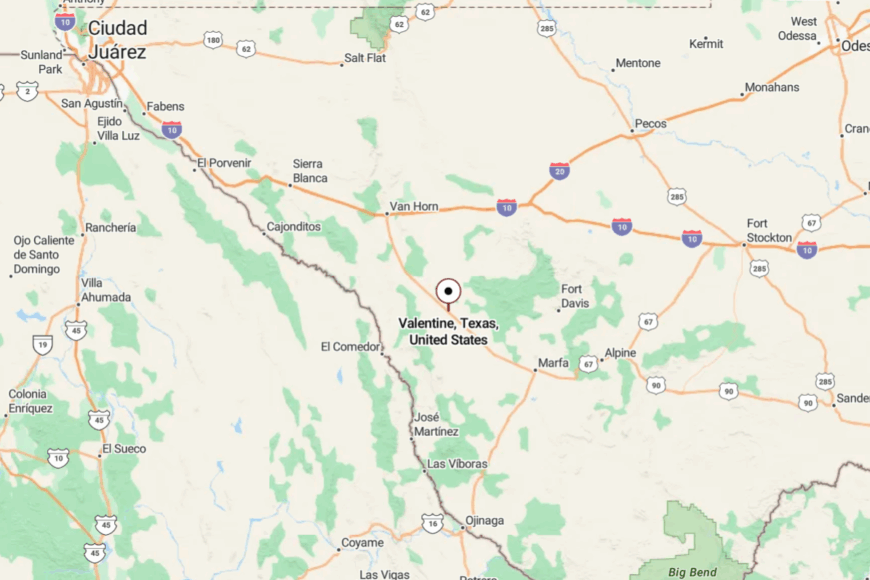
Valentine lies in Jeff Davis County, about 37 miles west of Marfa on US-90. The drive is a study in desert minimalism—straight road, low hills, and big sky.
Signs of town appear only at the last moment. It’s a fitting entrance for a place that doesn’t need to announce itself.
19. Dell City – Fields at the Edge of the Desert
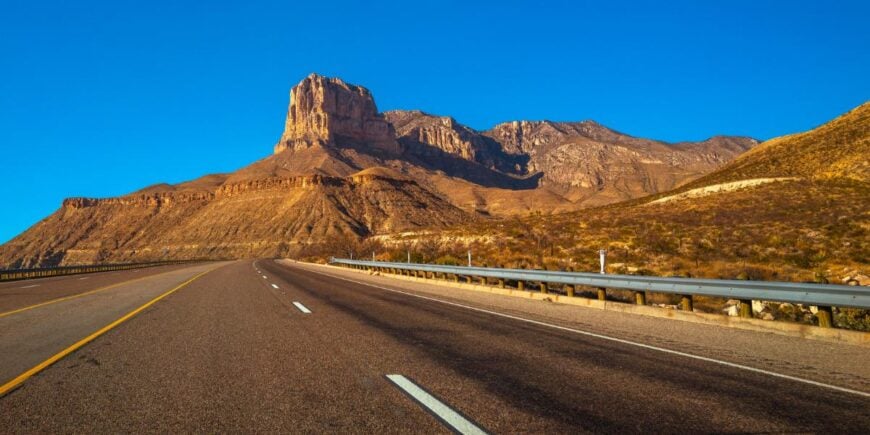
Dell City is an unexpected splash of green in the desert, thanks to irrigation from the Salt Basin aquifer. Its seclusion is the combination of distance—nearly an hour from the nearest small city—and the sheer openness around it.
The vibe is agricultural and peaceful: windbreaks, tidy fields, and mountain backdrops. Drive to the Guadalupe Mountains for a hike, shop for local produce, or photograph the golden light on alfalfa fields.
Farming sustains the economy, but nature dominates the view. In the quiet here, you can hear the fields breathe.
Where is Dell City?

Dell City sits in Hudspeth County, about 95 miles east of El Paso. You reach it via TX-62/180 and FM 1437, a route that trades traffic for views.
The last stretch is a straight shot across desert flats. The mountains rise like sentinels as you draw near.
18. Alpine – The Quiet Hub of Big Bend Country
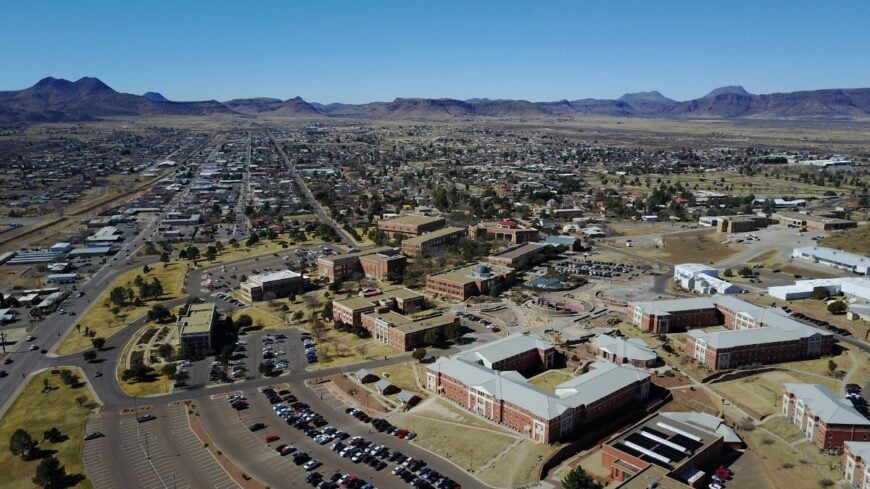
Alpine may be the largest town in the Big Bend region, but its distance from big cities gives it a secluded charm. The vibe is artsy and relaxed—murals on brick walls, bookshops, and a mix of cowboy boots and hiking gear.
Explore the Museum of the Big Bend, hike in nearby parks, or attend the Viva Big Bend music festival. Ranching, education, and tourism shape the economy here.
Despite being a hub, the desert still dictates the rhythm of life. There’s space here to be busy or still, and both feel natural.
Where is Alpine?
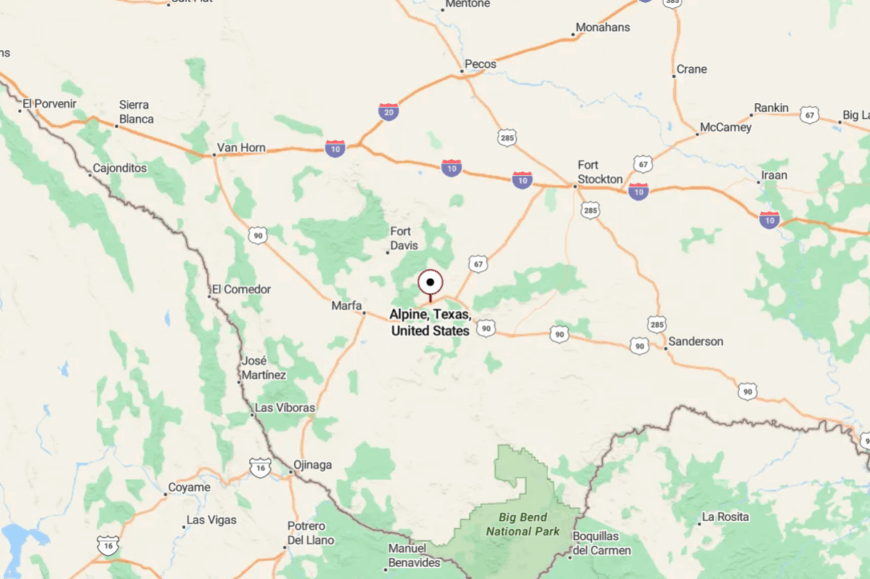
Alpine is in Brewster County, about 80 miles south of Fort Stockton on US-67/90. High desert surrounds it on all sides, making any drive in a scenic one.
Roads climb gently toward the Davis Mountains as you approach. By the time you arrive, the horizon feels comfortably far away.
17. Van Horn – Crossroads Under Desert Peaks
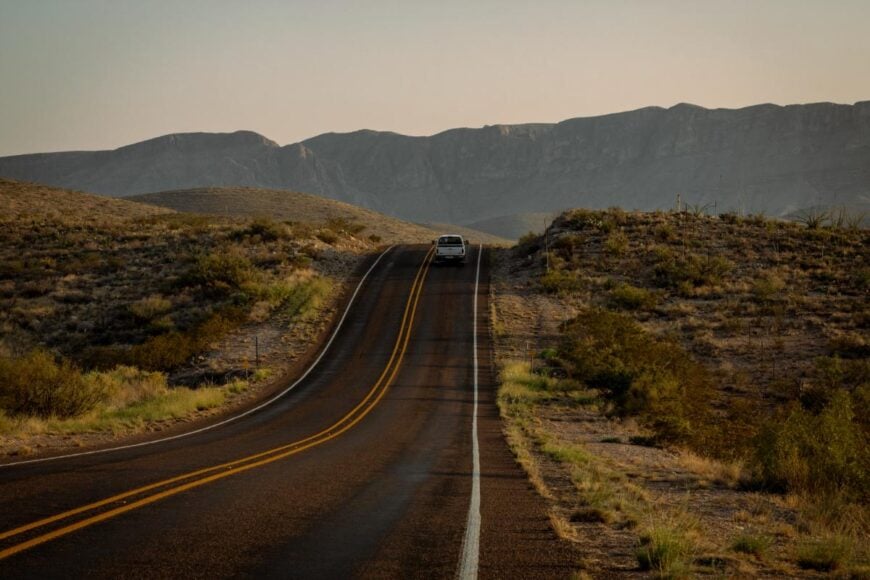
Van Horn rests at the junction of I-10, US-90, and TX-54, but still feels apart from the rush. Its seclusion comes from the desert and mountains that frame it, giving even the busiest day a quiet backdrop.
The vibe is a mix of travel stop and small-town pride—museums, local diners, and a few colorful murals. Visit the Clark Hotel Museum, hike in the nearby Guadalupe Mountains, or take a side trip to the Sierra Diablo range.
Tourism and highway services keep the town humming without losing its desert calm. When the sun dips, the peaks glow and traffic fades to a hum.
Where is Van Horn?
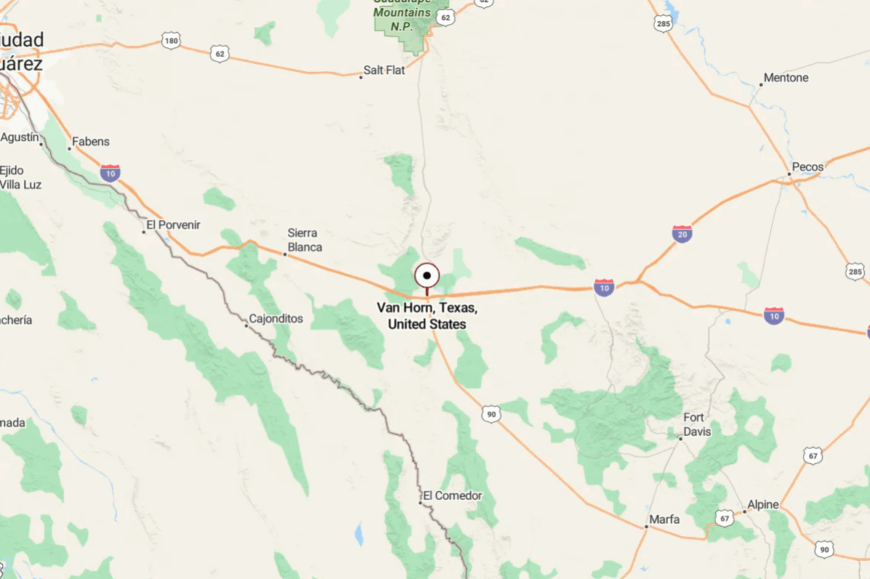
Van Horn is in Culberson County, about 120 miles east of El Paso along I-10. The drive in is ringed with desert vistas and distant ridges.
Exiting the highway here feels like stepping into a slower chapter. The peaks stand watch long after you’ve settled in.
16. Brackettville – Frontier Town with a Quiet Heart
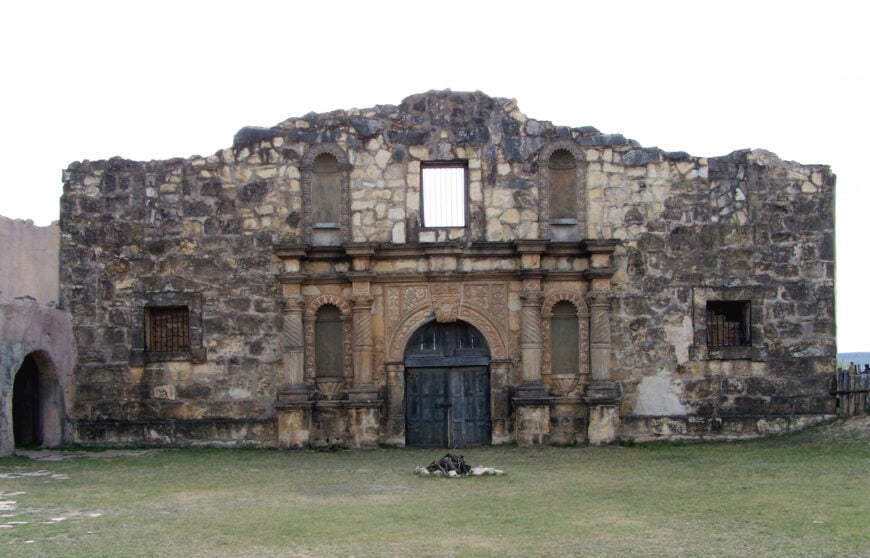
Brackettville blends history and solitude in a way few places can. Its apartness comes from being tucked into the brush country, far from major urban sprawl. The vibe is historical and easygoing—stone buildings, wide porches, and a main street where the pace is measured in conversations.
Explore Fort Clark Springs, wander old military grounds, or take a slow drive through the surrounding ranchlands. The local economy leans on tourism, ranching, and a touch of filmmaking history from the nearby Alamo Village set.
At night, crickets and the rustle of mesquite leaves fill the air. It’s the kind of place where history feels alive and unhurried.
Where is Brackettville?
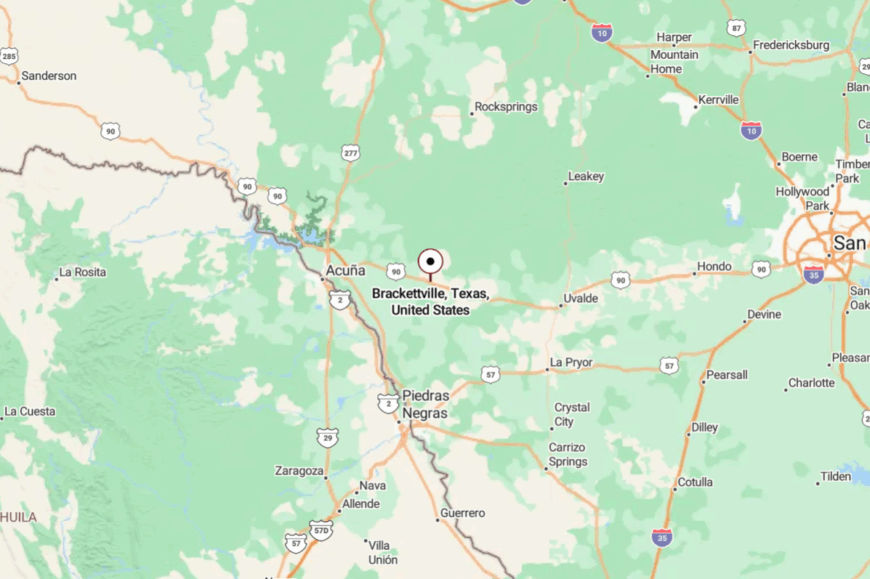
Brackettville sits in Kinney County, about 30 miles east of Del Rio on US-90. The road winds through dry rolling hills and ranch gates.
Arriving feels like you’ve stepped into a quieter chapter of Texas history. The brush and limestone bluffs seem to keep it tucked away from the modern rush.
15. Big Bend Ranch State Park Headquarters (Sauceda) – The Loneliest Outpost

At the center of Big Bend Ranch State Park, Sauceda is less a town than a remote outpost, but it holds the essence of seclusion. Surrounded by 300,000 acres of rugged canyons and desert, it’s accessible only by miles of gravel road.
The vibe is pure wilderness—no stores, no gas stations, just wide skies and the occasional roadrunner darting across the path. Visitors come for hiking, mountain biking, horseback riding, or simply the quiet.
Staff and park rangers form the tiny resident community. At night, the stars spill so thick you almost forget the ground beneath you. It’s seclusion at its most complete.
Where is Sauceda?
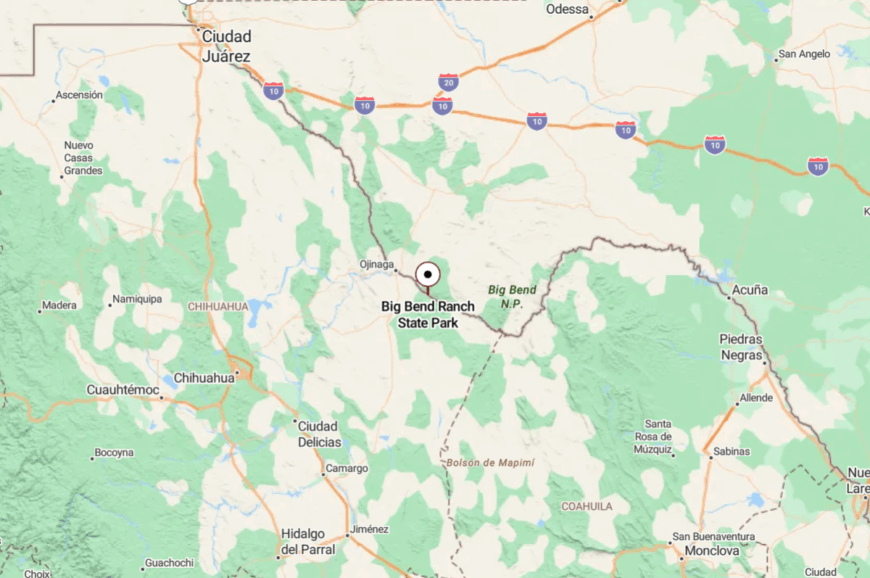
Sauceda lies deep within Big Bend Ranch State Park in Presidio County, roughly 27 miles from the nearest paved road. Getting there requires navigating gravel and dirt tracks from FM 170 or Casa Piedra Road.
The remoteness is part of the appeal—by the time you arrive, the rest of the world feels far behind. Out here, the silence has weight.
14. Catarina – Desert Hamlet with Fading Edges
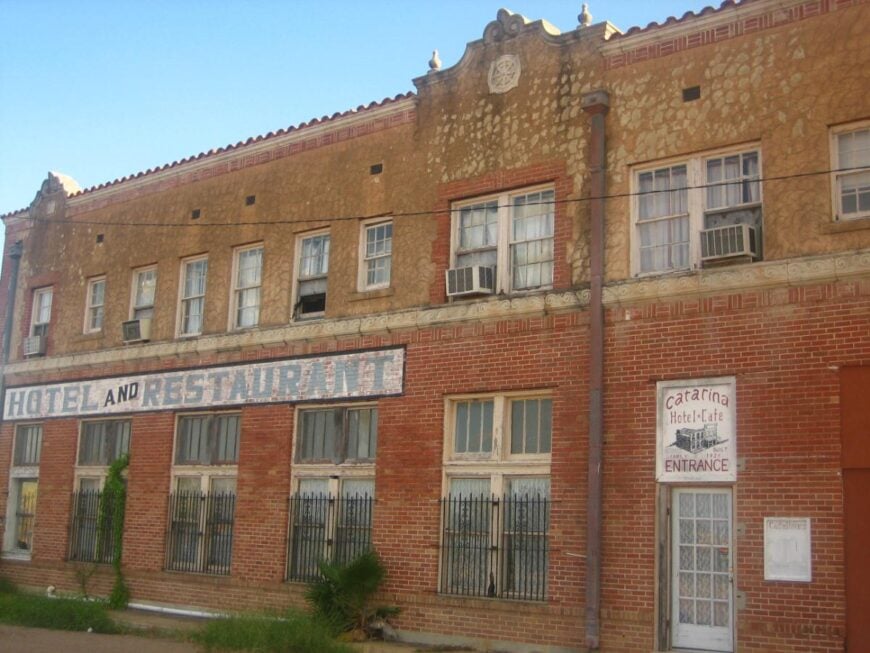
Catarina is a small unincorporated community where the desert meets the ranchlands of Dimmit County. Its apartness is underscored by the slow fade of old buildings and the distance to any major services.
The vibe is sun-bleached and still—weathered storefronts, quiet yards, and a horizon where mesquite blends into sky. Visitors might spot the old Catarina Hotel, once a destination for hunters and travelers, now a relic of busier days.
Ranching remains the backbone of life here. It’s the kind of place where the past lingers in the air like dust after a cattle drive.
Where is Catarina?
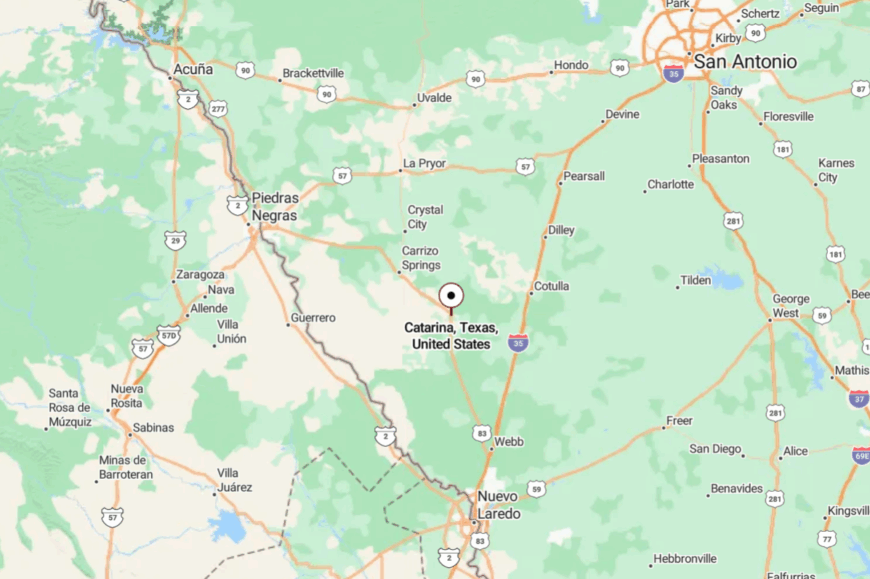
Catarina is located along US-83 in Dimmit County, about 12 miles south of Carrizo Springs. The drive in passes through brush country and wide, open flats.
The last miles seem to draw out under the Texas sun. Arrival feels like stepping into a postcard from decades ago.
13. Chispa – The Town That Time Forgot
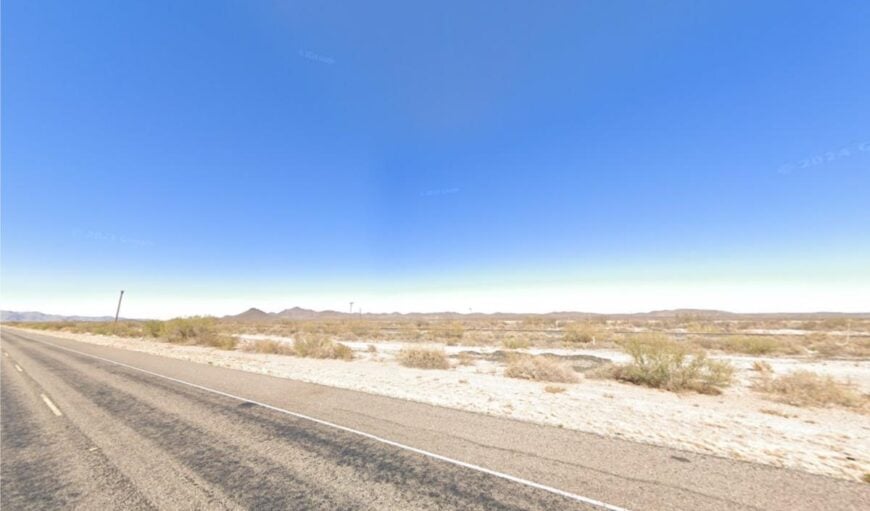
Chispa is an unincorporated dot in Presidio County, once a small railroad stop and now nearly abandoned. Its seclusion is extreme—miles from the nearest store or gas station, surrounded by desert and distant mountain silhouettes.
The vibe is ghostly and fascinating: scattered ruins, wind-scoured walls, and a silence broken only by the occasional train. Exploring here means self-sufficiency—photography, history-hunting, and the pure act of being somewhere few others go.
There’s no active economy to speak of; the land has reclaimed most of it. Chispa feels like a secret whispered only to those who wander far enough.
Where is Chispa?
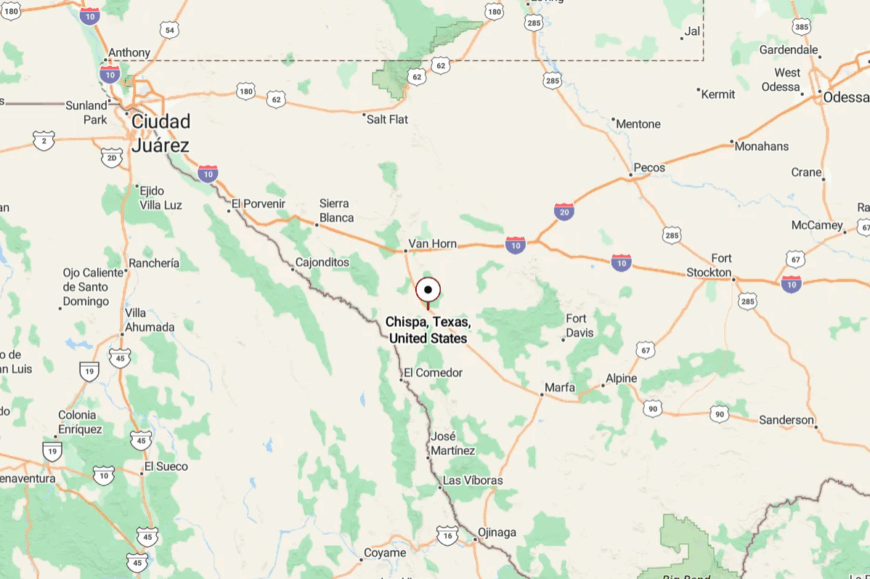
Chispa sits along the Union Pacific rail line in Presidio County, roughly 37 miles south of Van Horn via US-90 and FM 2017. The route winds through open rangeland with almost no signs of habitation.
When you arrive, you may find you have it all to yourself. The empty horizon feels like an invitation and a challenge at the same time.
12. Pandale – A Remote Bend in the Rio Grande
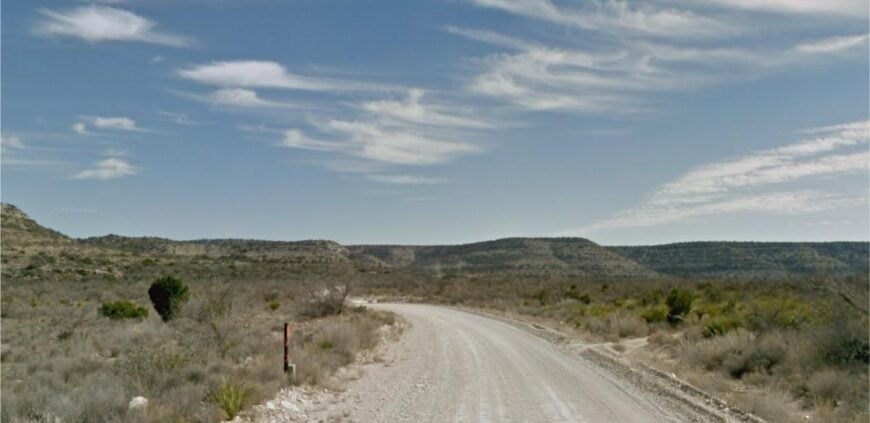
Pandale is little more than a scattering of homes and ranch gates tucked into the rocky canyons along the Pecos River. Its apartness is profound—reached only by long stretches of ranch road that twist through mesquite flats and limestone ridges.
The vibe is rugged and elemental: the smell of cedar in the wind, the call of hawks circling above, and the quiet lap of water against the riverbank. Visitors come to fish, paddle the Pecos, or simply sit on a bluff and watch the sun drop behind the canyon walls.
Ranching is the only steady presence here, and even that feels in step with the land. Pandale is the kind of place where silence is not an absence but a companion.
Where is Pandale?
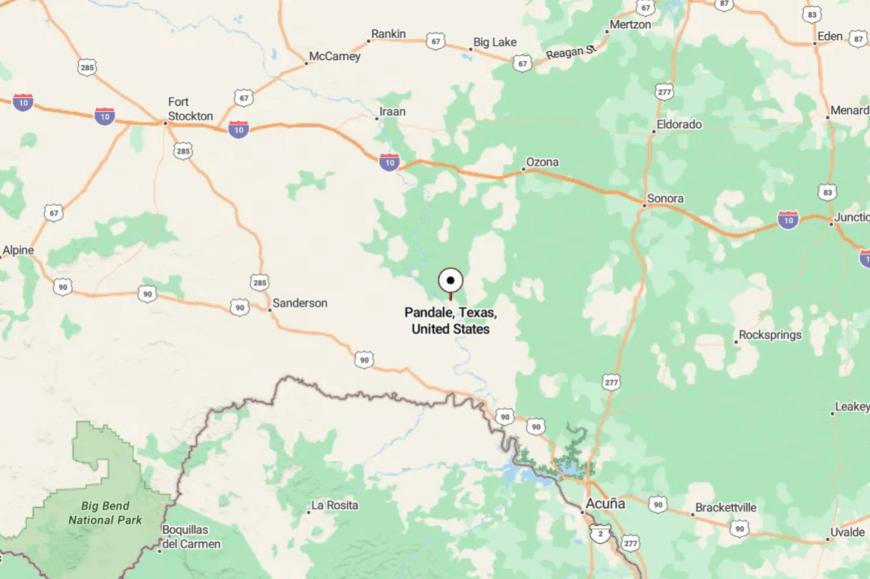
Pandale sits in Val Verde County, roughly 50 miles northwest of Del Rio as the crow flies—but much farther by road. The journey involves miles of unpaved ranch roads branching from TX-163 or US-90, with the river as your guide.
The last stretch narrows into a ribbon of gravel hugging the canyon edge. Arriving feels like crossing into a world that forgot what hurry means.
11. Encinal – Crossroads of Quiet and History

Encinal is a small town in La Salle County that has seen more bustling days, but now moves at a gentler pace. Its apartness comes from being bypassed by modern traffic, leaving its historic buildings to weather slowly in the sun.
The vibe is humble and welcoming—small cafés, century-old storefronts, and the steady rhythm of ranch life. Visit the historic downtown, wander the quiet streets, or take scenic drives through the surrounding brush country.
Ranching is still the mainstay here, as it has been for generations. Encinal has a way of making even a short visit feel like a step back in time.
Where is Encinal?
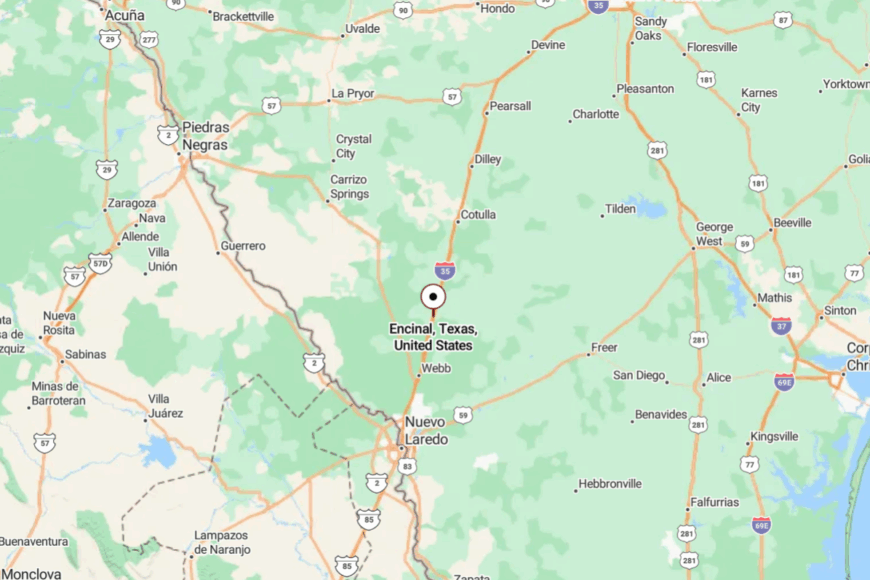
Encinal is located along I-35 in La Salle County, about 40 miles north of Laredo. It’s easily reached by highway, but the town itself feels far removed from the rush of passing trucks.
The main streets are calm, shaded by old oaks and wide skies. It’s close enough for a day trip, yet far enough to let the world fall away.
10. Fort Davis – High Desert Hideaway

Fort Davis, with a population of around 1,200, is a charming unincorporated community nestled in the Davis Mountains. I love visiting the Fort Davis National Historic Site, where the old frontier fort brings history to life.
The area is a haven for outdoor enthusiasts, offering hiking trails in the Davis Mountains State Park and some of the best stargazing at the McDonald Observatory. The local economy thrives on tourism, ranching, and a small but vibrant artisan community.
What makes Fort Davis particularly secluded is its high elevation and remote location, far from major cities, providing a peaceful retreat surrounded by rugged natural beauty. The quiet streets and expansive landscapes make it feel like a world away from modern life’s rush.
Where is Fort Davis?

Fort Davis is located in Jeff Davis County in Southwest Texas, approximately 200 miles southeast of El Paso. Its seclusion comes from being nestled in the heart of the Davis Mountains, the highest mountain range in Texas, which naturally isolates it from larger urban areas.
To get there, I usually drive along the scenic Texas Highway 17 or 118, enjoying the breathtaking views as the elevation rises. The journey itself feels like a step back in time, with wide-open roads and vast stretches of untouched land leading to this high desert hideaway.
9. Sheffield – Where the Desert Meets the Sky

Sheffield is a tiny unincorporated area with a population of around 600 people, offering a serene escape where the desert truly meets the sky. Whenever I’m craving solitude, I find solace in the quiet beauty of Sheffield’s wide-open spaces.
Outdoor activities like birdwatching, hiking, and exploring the nearby Pecos River are some of my favorite pastimes here. The local economy is primarily based on ranching and a touch of oil industry presence.
What makes Sheffield so secluded is its remote location amid vast desert landscapes, with minimal development and few visitors passing through. It’s the perfect spot for anyone seeking to disconnect and immerse themselves in nature’s grandeur.
Where is Sheffield?

Sheffield is situated in Pecos County in Southwest Texas, along U.S. Highway 290, about 75 miles east of Fort Stockton. Its seclusion is heightened by the miles of desert that surround it, far from any major city or bustling highway.
To get there, I take the quiet stretches of Highway 290, enjoying the solitude of the journey itself. The remoteness of Sheffield, coupled with its expansive skies and endless horizons, makes it feel like a hidden sanctuary away from the pace of modern life.
8. Redford – Silence Along the Rio Grande

Redford is a tiny, unincorporated community with a population hovering around 90 residents. Whenever I visit, I enjoy the profound silence and the sense of peace that comes from being along the Rio Grande.
The main activities here revolve around nature—birdwatching, hiking along the riverbanks, and soaking in the vastness of the landscape. There’s little in the way of industry, aside from small-scale farming and ranching.
Redford’s seclusion is due to its remote location and minimal development, making it an ideal spot for those looking to disconnect entirely. It’s one of those rare places where you can truly escape the noise and distractions of everyday life.
Where is Redford?

Nestled in Presidio County in Southwest Texas, Redford sits along Farm Road 170, not far from the Mexican border. Its isolation is accentuated by the rugged terrain of the Chihuahuan Desert and the winding Rio Grande that borders it.
Getting there involves traversing long stretches of quiet roads, often without encountering another vehicle for miles.
I usually take FM 170, also known as the River Road, which offers stunning views but requires careful navigation through the remote desert landscape. The journey to Redford is a pilgrimage into tranquility, set apart from the bustle of city life.
7. Pumpville – Hidden Gems of Val Verde County

Pumpville is an unincorporated area with an estimated population of fewer than 30 people, offering an extreme level of seclusion that I find both humbling and invigorating. There’s not much in terms of attractions, but the simplicity of life here is the draw.
Exploring the expansive desert plains and enjoying the clear night skies are among my favorite activities. The area has a history tied to the railroad and ranching, though today, it’s primarily quiet and sparsely populated.
Pumpville’s isolation is due to its remote location and the vast stretches of rugged terrain that surround it, making it a perfect getaway for solitude seekers.
Where is Pumpville?

Located in Val Verde County, Southwest Texas, Pumpville is roughly 70 miles west of Del Rio. Its seclusion comes from being deep within the desert, far from major highways and urban centers.
To reach Pumpville, I navigate a series of county roads, often unpaved and winding through the desert landscape. The remoteness of the area is palpable, with miles of open land in every direction.
This hidden gem is truly off the beaten path, ideal for those willing to venture into the heart of the Southwest Texas wilderness.
6. Study Butte – Gateway to Big Bend Seclusion

Study Butte, with a population of about 250, is a quiet community that serves as one of the gateways to Big Bend National Park. I always enjoy stopping here to stock up on supplies before venturing into the park.
Activities include visiting the local galleries, exploring nearby desert trails, and enjoying the tranquility of the surroundings. The economy is primarily driven by tourism related to the park and some mining operations.
Study Butte’s seclusion is enhanced by its sparse population and the vast, open landscapes that envelop it, offering a peaceful respite for travelers like me.
Where is Study Butte?

Situated in Brewster County, Study Butte lies along Highway 118, just minutes from the entrance to Big Bend National Park. Its secluded nature stems from the remote desert environment and the significant distance from larger towns or cities.
Getting there involves a long but scenic drive through Southwest Texas, often with minimal traffic and endless views of the desert and mountains. The location makes it an ideal base for exploring the park while enjoying a quiet, small-town atmosphere.
5. Dryden – Desert Solitude Off the Beaten Path

Dryden is an unincorporated community with a population of less than 15 people, epitomizing desert solitude. Whenever I pass through, I’m struck by the vast open spaces and the quiet that envelops the area.
Activities are minimal, mainly exploring the surrounding desert and enjoying the unparalleled night skies. Historically, Dryden was a stop along the railroad, but today, it’s a virtually forgotten dot on the map.
Its seclusion is due to the remote location along U.S. Highway 90 and the lack of development, making it a haven for anyone seeking complete tranquility.
Where is Dryden?

Dryden is located in Terrell County, along U.S. Highway 90, about halfway between Del Rio and Alpine. Its isolation comes from the expansive desert that surrounds it and the scarcity of nearby towns.
To get there, I drive long stretches of open highway, often without seeing another car for miles. The journey highlights the vastness of Southwest Texas and leads to a place where you can truly feel away from it all.
4. Langtry – Judge Roy Bean’s Legacy Lives On

Langtry, with a population of around 30, is a tiny town perched above the Pecos River, steeped in Old West history. I enjoy visiting the Judge Roy Bean Visitor Center, which commemorates the “Law West of the Pecos.”
There isn’t much in the way of industry today, aside from tourism centered around its colorful past. Langtry’s seclusion is rooted in its remote desert location and the quiet that comes from being far off the main travel routes.
It’s a place where history and solitude blend seamlessly, offering a unique experience.
Where is Langtry?

Located in Val Verde County, Langtry sits along U.S. Highway 90 near the Texas-Mexico border. Its seclusion is amplified by the stark desert surroundings and the vast distances between it and larger towns.
To reach Langtry, I travel along Highway 90, crossing rugged landscapes and the impressive Pecos High Bridge. The town’s remote setting atop the cliffs makes it feel like a hidden relic of the past, far from the distractions of modern life.
3. Shafter – Silver Mines and Silent Streets

Shafter is an unincorporated community with a population of about 11 people, nestled in the Presidio County mountains. I find its history as a silver mining town fascinating, with remnants of old mines and structures still visible.
While there’s not much to do in terms of modern entertainment, exploring the historic sites and enjoying the mountain scenery are highlights for me. The main industry once revolved around silver mining, but today it’s largely abandoned.
Shafter’s seclusion is due to its remote location and the quiet that permeates the area, making it a peaceful retreat into the past.
Where is Shafter?

Shafter is located along U.S. Highway 67, about 18 miles north of Presidio. Its isolation comes from the surrounding Chinati Mountains and the sparse population in the region. Getting there involves a scenic drive through mountainous terrain, with few signs of civilization along the way.
The tranquil setting and the sense of history make Shafter a unique destination for those seeking solitude and a glimpse into Texas’s mining heritage.
2. Lajitas – Oasis by the Rio Grande

Lajitas is a small resort community with a population of around 75, set along the banks of the Rio Grande. I enjoy the blend of luxury and rugged nature here, especially the Lajitas Golf Resort, which offers a surprising oasis in the desert.
Activities include golfing, horseback riding, zip-lining, and exploring the nearby Big Bend area. The economy revolves around tourism, catering to visitors seeking adventure and relaxation.
Lajitas’s seclusion is due to its remote location and the surrounding rugged canyons, providing a serene escape from the hustle of everyday life.
Where is Lajitas?

Located in Brewster County, Lajitas sits between Big Bend National Park and Big Bend Ranch State Park, right along FM 170. The town’s remoteness is accentuated by the surrounding desert mountains and its proximity to the Rio Grande.
To get there, I take the scenic River Road (FM 170), which winds along the Rio Grande and offers breathtaking views. The journey itself sets the tone for the secluded and tranquil experience that awaits in Lajitas.
1. Terlingua – The Ghost Town of the Chihuahuan Desert

Terlingua is an unincorporated ghost town with a population of about 58 people, surrounded by the vast landscapes of the Chihuahuan Desert. I find its blend of history and natural beauty captivating.
The town offers unique attractions like the Terlingua Ghost Town ruins, eclectic art installations, and the famous annual Chili Cook-off. The main industries include tourism and some mining remnants.
Terlingua’s seclusion comes from its remote desert setting, minimal development, and the sense of stepping into a different era. It’s a place where I feel completely detached from the outside world, immersed in the stark beauty of the desert.
Where is Terlingua?

Terlingua is located in Brewster County, near the Mexican border, close to the entrance of Big Bend National Park. Its isolation is heightened by the expansive desert that envelops it and the lack of major roads or nearby cities.
To reach Terlingua, I usually drive along Highway 118 from Alpine or Highway 170 from Presidio, both routes offering miles of open landscape. The journey through the desert enhances the feeling of seclusion, making Terlingua a perfect destination for those seeking an off-the-grid experience.






